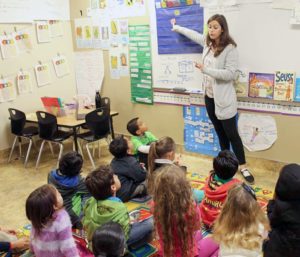Student Contributor: H. Stinger
 Activity interference is a tool that teachers can use when students start to become disengaged and distracted by moving along to the next activity. This in short just means if a teacher sees students starting to get off task because of “dead time,” the teacher just needs to reevaluate if the lesson is moving along and engaging. This is helpful for teachers and students to keep everyone focused and engaged.
Activity interference is a tool that teachers can use when students start to become disengaged and distracted by moving along to the next activity. This in short just means if a teacher sees students starting to get off task because of “dead time,” the teacher just needs to reevaluate if the lesson is moving along and engaging. This is helpful for teachers and students to keep everyone focused and engaged.
This tool is fairly straightforward in the idea that when students start to become off task and disruptive, it means it is time to move forward with the next part of the lesson or start a new activity. By keeping the task at hand actively engaging for all, it will make sure that distracting behaviors will not grow. An example Gus gives about this tool is if you have a student pass out papers to the class, have students that are sitting start doing another task so there will be no time for lulls while the rest of the class waits for that student to pass out all of the papers. This tool is best used when lesson plans don’t go as planned (example when you use technology and the technology fails, have a plan B).
 This is an example of the corrective phase. It is corrective because hopefully over time students will realize that if there are ever “dead times” that it is their job to still be able to be respectful while the teacher gets ready to move onto the next thing. Overall, this is mainly a collaborative theory because the teacher can decide when the classroom is getting too out of hand and when to move onto the next activity while it is also up to the students to decide if they start being disruptive or sit respectfully during lulls.
This is an example of the corrective phase. It is corrective because hopefully over time students will realize that if there are ever “dead times” that it is their job to still be able to be respectful while the teacher gets ready to move onto the next thing. Overall, this is mainly a collaborative theory because the teacher can decide when the classroom is getting too out of hand and when to move onto the next activity while it is also up to the students to decide if they start being disruptive or sit respectfully during lulls.
More Information –
Tool Source: Gus Nollmeyer


